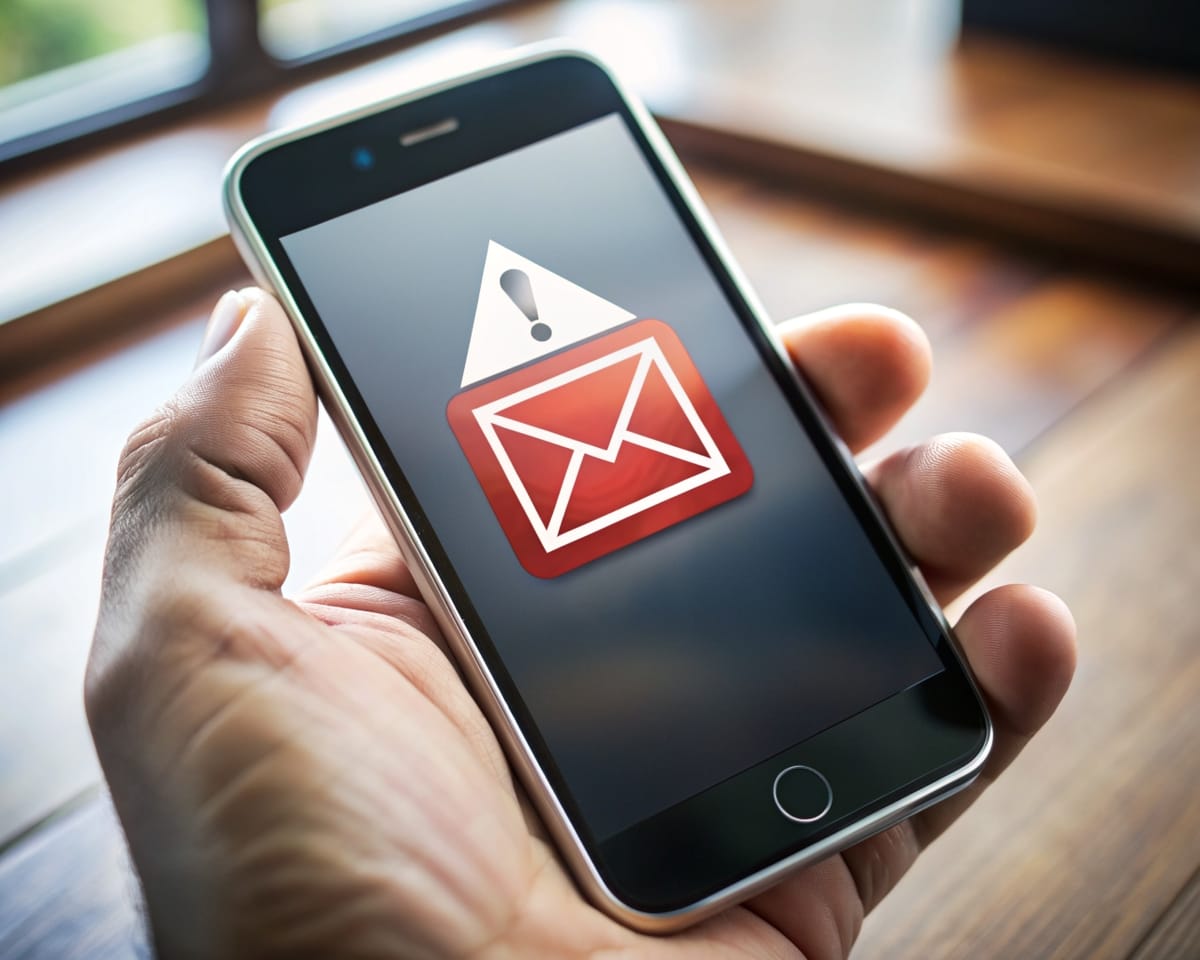Email has become an important way to communicate, both personally and professionally. Email is convenient, but it also comes with the risk of email spoofing, which is a trick that scammers use to scam through emails. In order to protect yourself and your company from possible security risks, you need to know how to spot spoof emails. This blog post will go into more detail about what email spoofing is, how email spoofing works, and how to prevent it.
What is Email Spoofing?
Email spoofing is a practice in which scammers change the sender's address on an email so that it looks like it came from someone else. This kind of impersonation can have very bad results, such as losing money, damaging your brand, and letting scammers into your data. The main goal is to make people think the email is real, which makes them more likely to fall for scams, phishing efforts, or other fraudulent activities. So, knowing about email spoofing is a good way to stop these dishonest practices.

How Does Spoofing Emails Work?
Spoofing emails are a group of different techniques that scammers use to change the sender's address and trick users. In order to truly grasp email spoofing, you must study both its technical aspect and how scammers accomplish it. By learning about these parts, you can get a better sense of the weaknesses and dangers of email fraud.
Email Spoofing Technicalities
Spoofing emails depends on the Simple Mail Transfer Protocol (SMTP). SMTP is the standard way to get and send emails. You can better understand how scammers use gaps in the email system if you know how email spoofing works on a technical level. Here are a few important technical aspects:
- SMTP Header: The SMTP header has important information about an email, such as the sender's and recipient's addresses, the subject, and other details. Scammers change the title of the email to make it look like it came from a different address.
- DNS (Domain Name System): DNS turns domain names into random IP addresses. Scammers could use DNS configuration flaws or DNS spoofing to trick email users into thinking the email came from someone else.
- Sender Policy Framework (SPF): The email server can use SPF to send emails on behalf of a certain domain. Scammers can circumvent SPF checks or incorrectly set up SPF records to send fake emails.
Common Email Spoofing Methods
Email spoofing attacks are done in several different ways. By learning about these techniques, you can spot emails that might be fake and take the right steps to protect yourself. These are some popular ways:
- Simple Spoofing: Scammers can change the email's "From" field by hand to make it look like it came from someone else. This method is pretty easy to understand, but careful receivers can easily spot it.
- Phishing Attacks: Phishing emails often use email spoofing to appear as if they are from real people or businesses. Scammers send emails that look real and make people want to give out private information, click on harmful links or download malware.
- Domain Spoofing: Scammers can buy a domain name that sounds like a well-known company or brand and then use it to send fake emails. They trick people by using the trust that comes with a legal domain.
- Man-in-the-Middle Attacks: In this type of attack, someone listens in on the conversation between the sender and the recipient and changes the text of the email or changes the sender's address.

How to Identify Email Spoofing Attacks?
In order to protect yourself and your company from possible threats, you need to be able to spot an email fake attack. You can avoid falling for these scams by knowing how to spot a spoofed email and the different kinds of email phishing attacks.
Signs of a Spoofed Email
- Changes to the Sender's Address: Pay close attention to the sender's email address. Fake emails usually use a different domain name or a domain name that is slightly different or misspelt.
- Strange or Unexpected Content: Be wary of emails with strange or unrelated content. For example, deals that seem too good to be true, requests for personal information, or demands for quick payment.
- Poor Grammar and Spelling: Grammar and spelling errors are obvious in fake emails from non-English speakers or automated systems. If the email looks sloppy or is badly written, that could be a red flag.
- Sense of Urgency and Threats: Scam emails often use threats or a sense of urgency to get people to act right away. So, watch out for emails that make you feel rushed to give out private information or do something immediately.
- Unwanted Attachments or Links: When you receive emails with unwanted attachments or links, especially from people you don't know or suspect of being dishonest, be careful. These links could take you to malware or phishing sites.
Different Kinds of Email Spoofing Attacks
- Sender Spoofing: Faking the sender is the most common type of email spoofing. This is when someone changes the sender's address to look like someone else. For example, pretending to be a real business, coworker, or friend.
- Reply-to Spoofing: Scammers change the "Reply-to" email address so it doesn't match the writer's real address. Respondents may think they are answering to a different address, which gives scammers a chance to obtain private data.
- IP Spoofing: Scammers can change an email's source IP address to make it look like it came from a real address. This is known as IP spoofing, and it can circumvent security measures that use IP-based blocking.
- Display Name Spoofing: Scammers change the email's display name to make it look like it came from a known user, even though the real email address is different. This can trick people who only look at the show's name to determine who the sender is.

Impacts of Email Spoofing
Email spoofing can have big effects on individuals as well as businesses. Understanding these effects is key to demonstrating how important it is to stop and deal with fake email attacks.
Risks to Personal Safety
- Identity Theft: Email spoofing can lead to identity theft by deceiving users into giving up bank or social security numbers.
- Loss of Money: Pretending to be banks, online payment platforms, or other financial companies, scammers can trick people into making fraudulent transactions or sending money to accounts they aren't supposed to.
- Unauthorized Access: Spoofing emails may contain links or files that allow scammers to access devices or accounts without permission.
- Privacy Breach: Fake emails can steal personal information or infect devices, putting people's privacy at risk and encouraging abuse.
The Risks of Email Spoofing for Businesses
- Brand Damage: Spoofing emails can damage a company's brand, which can cause people to lose trust in them.
- Financial Effects: Email spoofing can lead to fraud, the theft of private information, and the cost of defending against the attack.
- Data Breach and Intellectual Property Theft: Scammers can access sensitive data without permission, leading to data breaches and theft.
- Legal and Compliance Issues: Email spoofing can land companies in lawsuits for risking user data.

How to Prevent Email Spoofing?
In order to stop and react to email spoofing attacks, you need a plan that includes best practices for email users, technological solutions, and the right things to do if you notice spoofing. Organizations and people can greatly lower the risk and damage of email spoofing attacks by using these methods.
Email Security Tips
- Check Email Sources: Check the sender's email address and website, especially if you don't know or trust them.
- Avoid Sharing Sensitive Information: Email is not a good way to share passwords, banking information, or personal information.
- Think Before Clicking: Be cautious when clicking links or downloading files from unknown sources. So, make sure to use antivirus software to check files.
- Use Multi-Factor Authentication (MFA): Add an extra layer of security to your email accounts.
- Update Software and Security Measures: Keep your systems, email apps, and antivirus software updated with the latest security patches.
Modern Solutions to Email Spoofing
- Use the SPF, DKIM, and DMARC standards to make sure that emails are real and stop people from spoofing them.
- Use email filters and anti-spam software to find fake emails and phishing attempts and stop them.
- For extra layers of security, consider Advanced Threat Protection (ATP) options, such as sandboxing, link scanning, and file analysis.

What to Do If You Get Fake Emails?
- Report the Incident: Spoofed emails should be reported to your email provider and any affected authorities or businesses.
- Tell Your Contacts: If your email has been spoofed, let your contacts know so they don't fall for any scams or fraud.
- Strengthen Security: To prevent spoofing from happening again, review and improve your security measures. For example, change your passwords, turn on two-factor authentication, and add more security procedures.
- Learn: Stay informed about the latest email fraud trends and methods used by scammers. Build a safety and awareness culture by teaching yourself and others about dangers, warning signs, and prevention.
In conclusion, it is very important to protect yourself and your business from email spoofing. By following best practices, using technology, and reacting properly to email spoofing attacks, you can greatly lower the chances and effects of these attacks. To protect personal information and avoid becoming a target, it's important to stay alert and take action.

